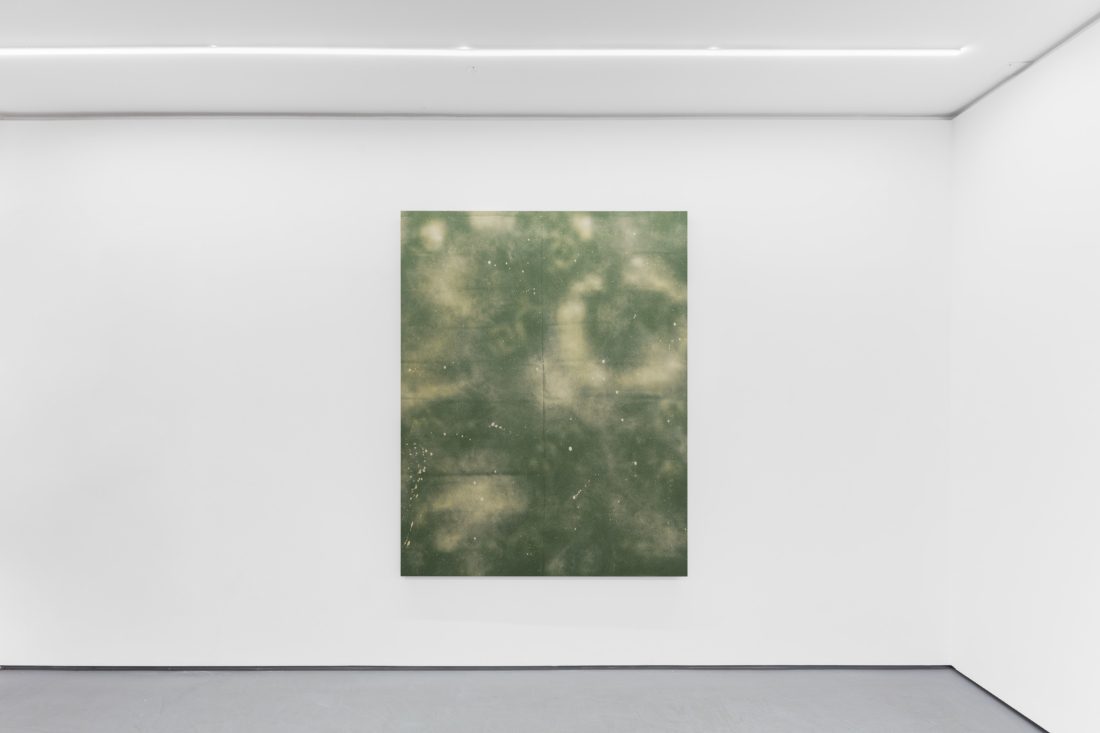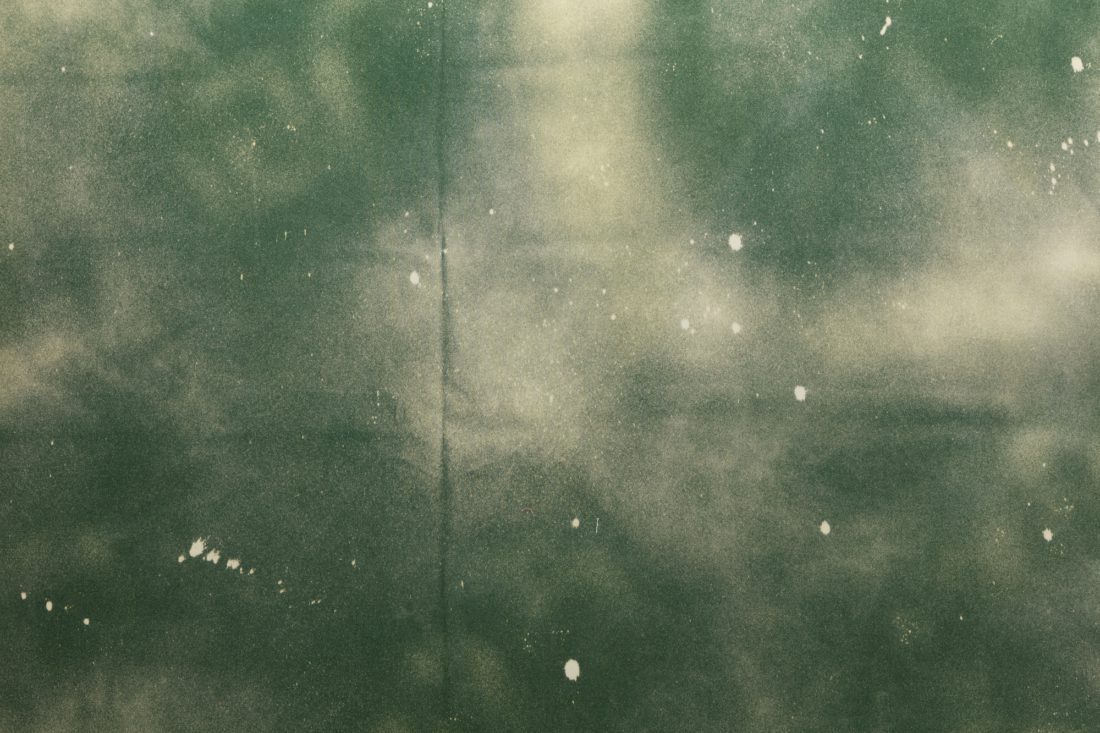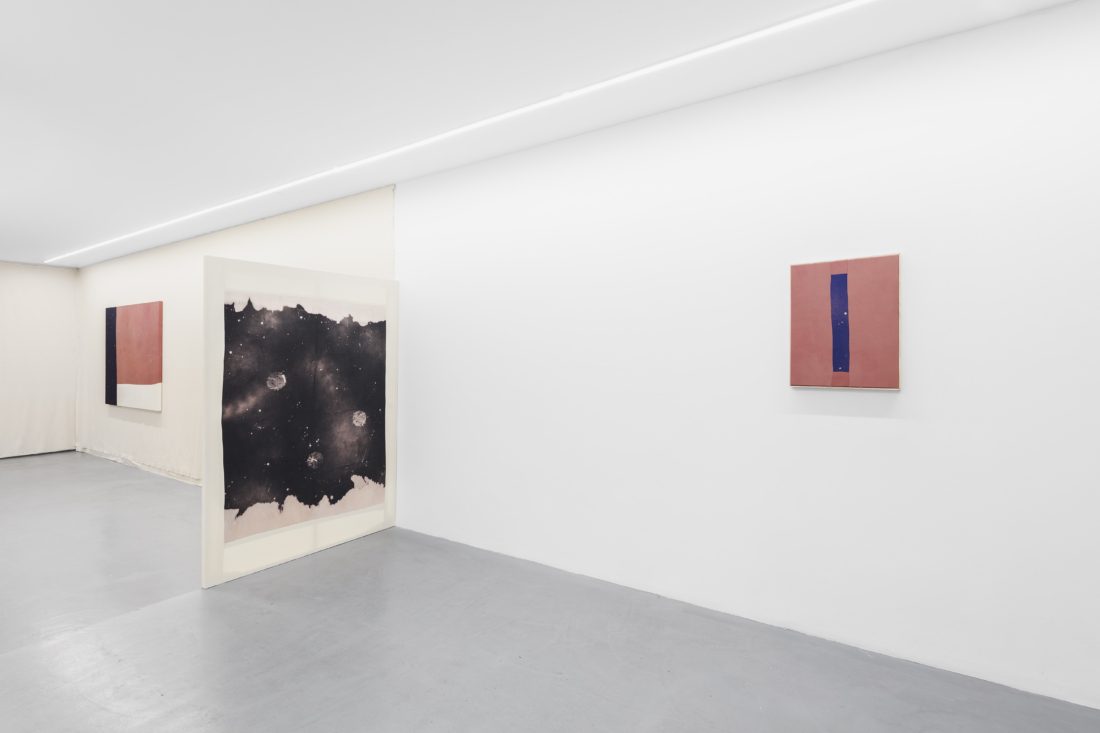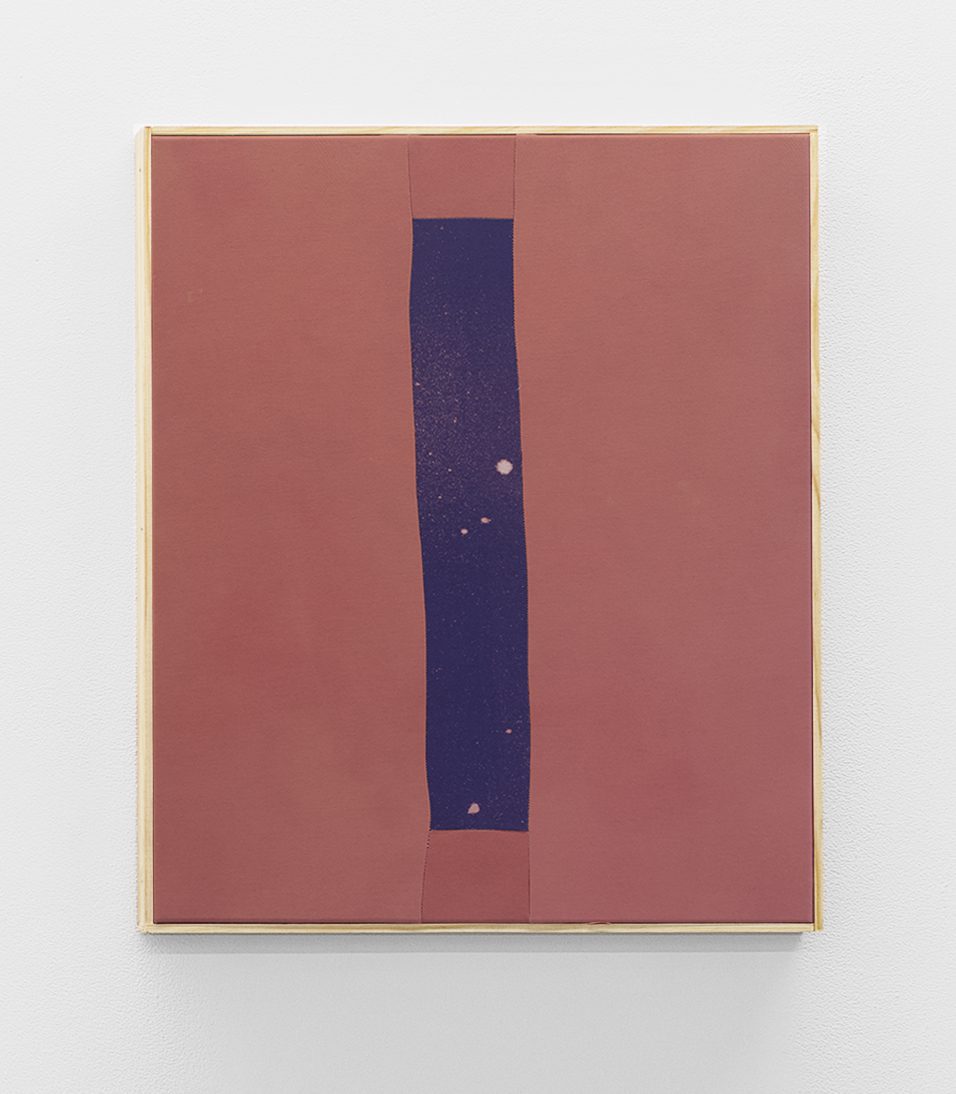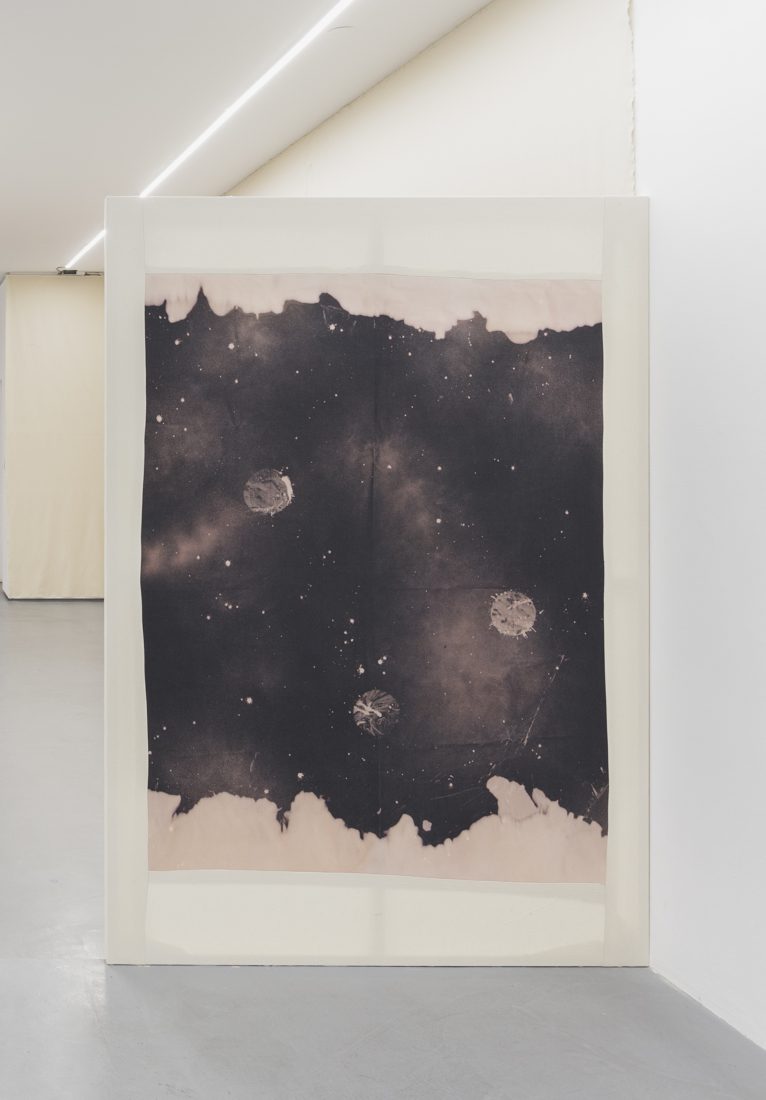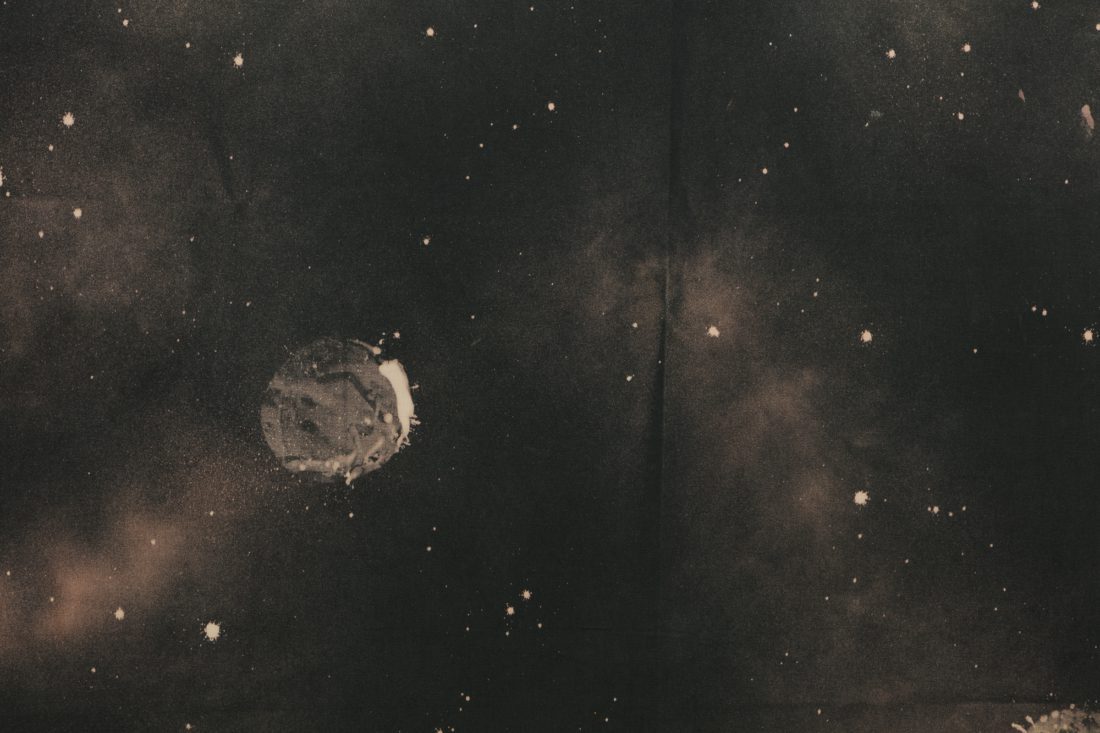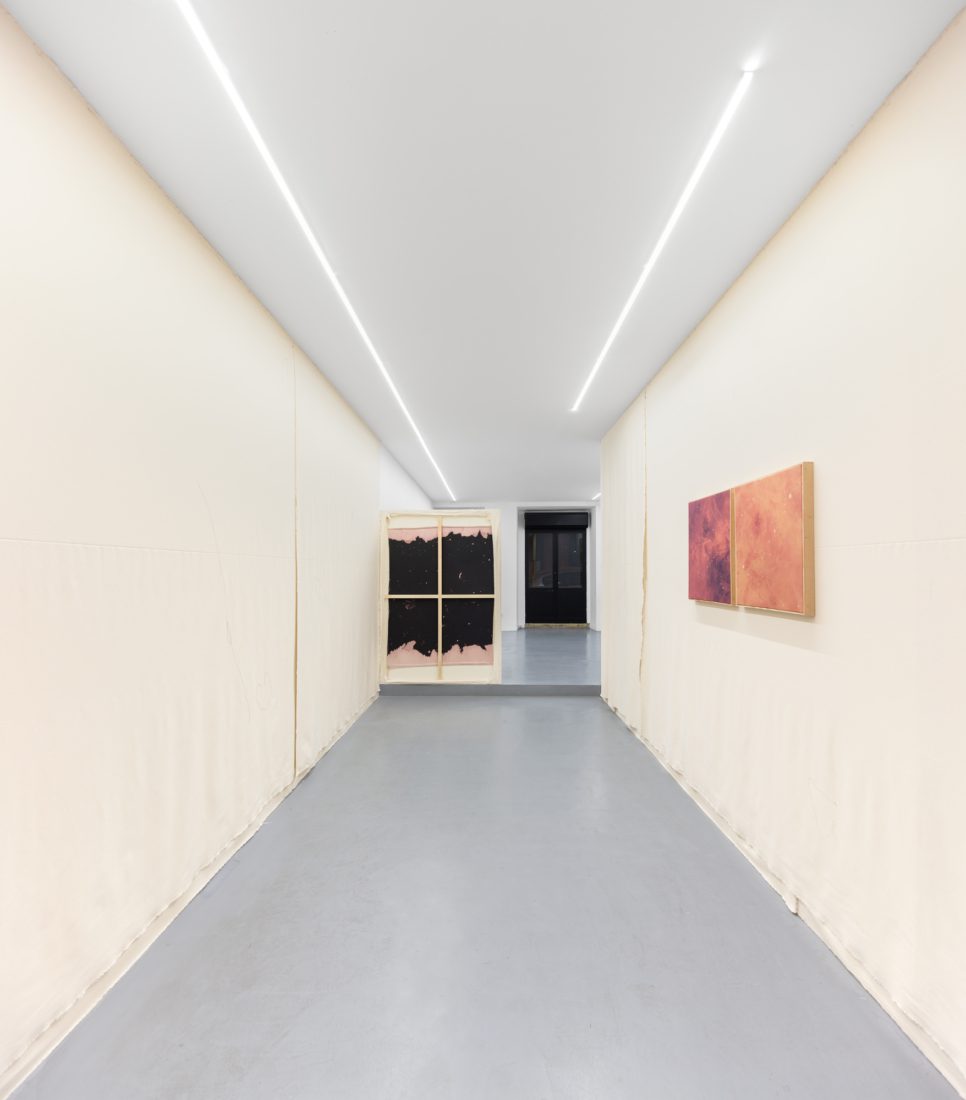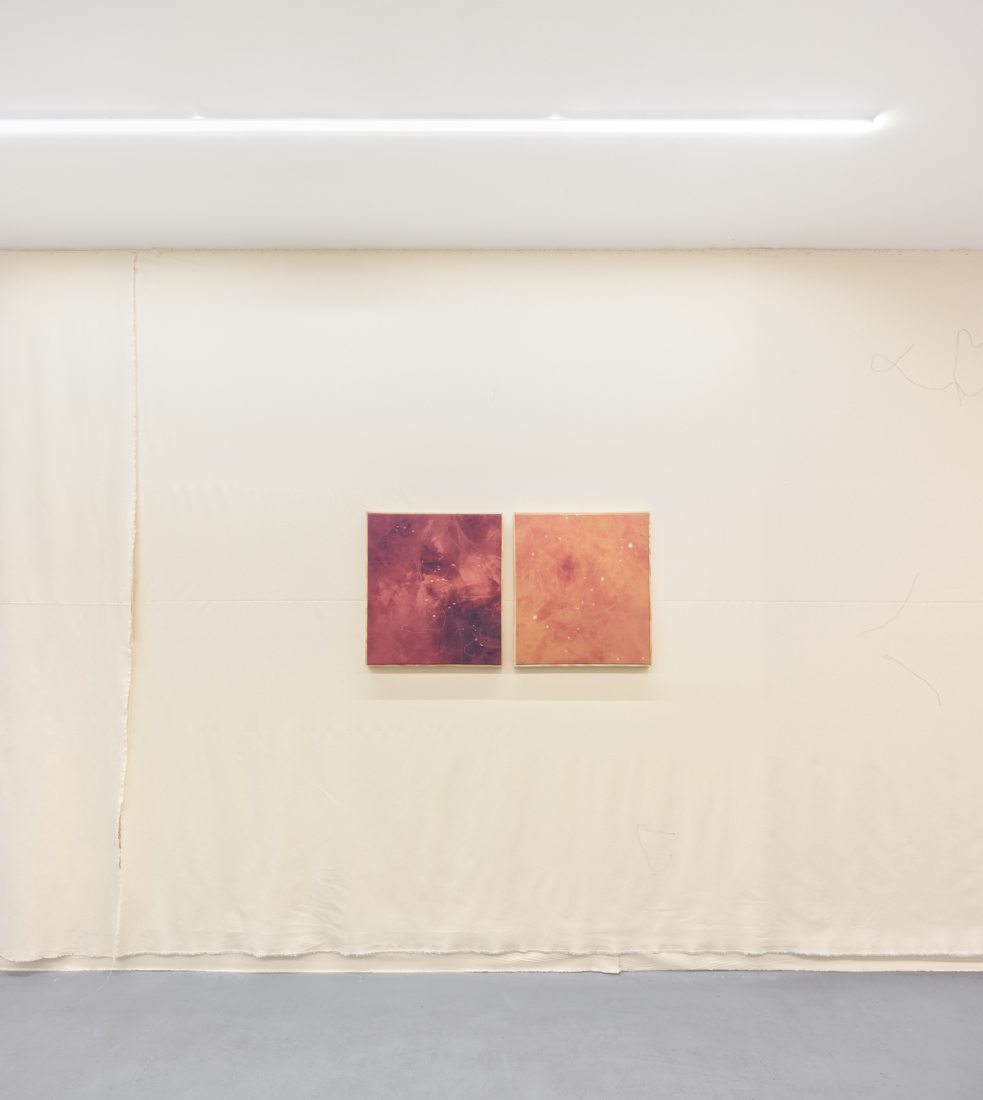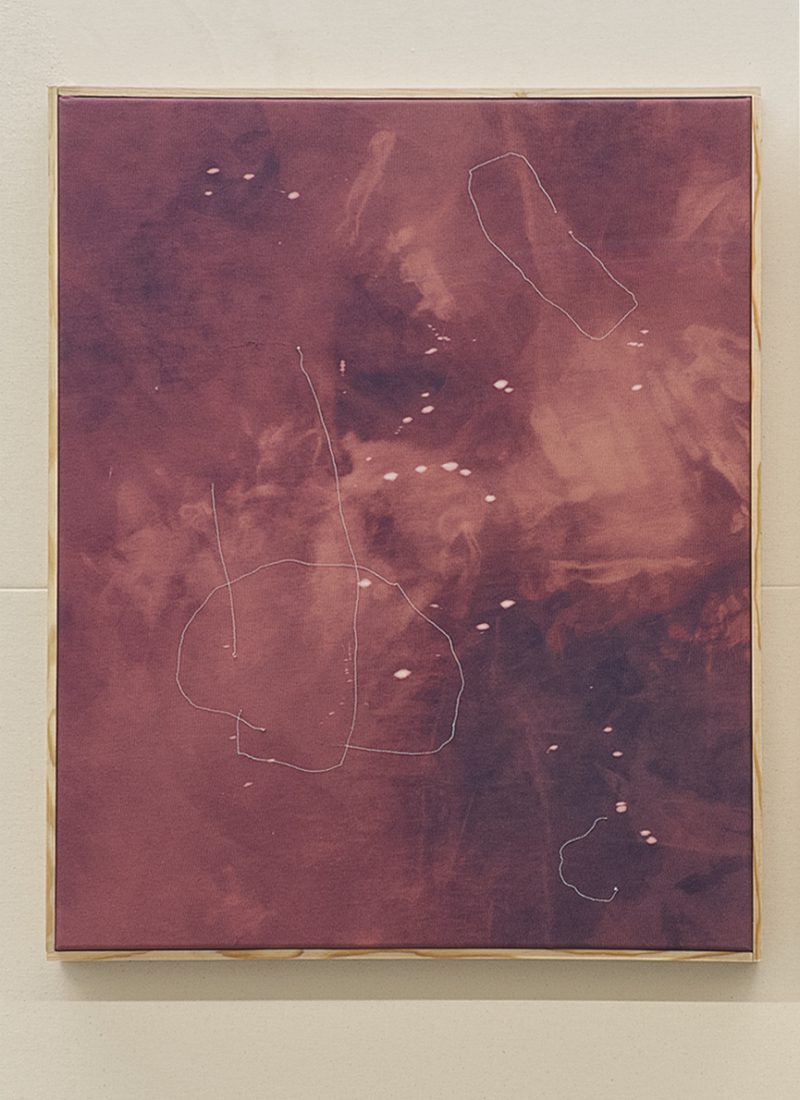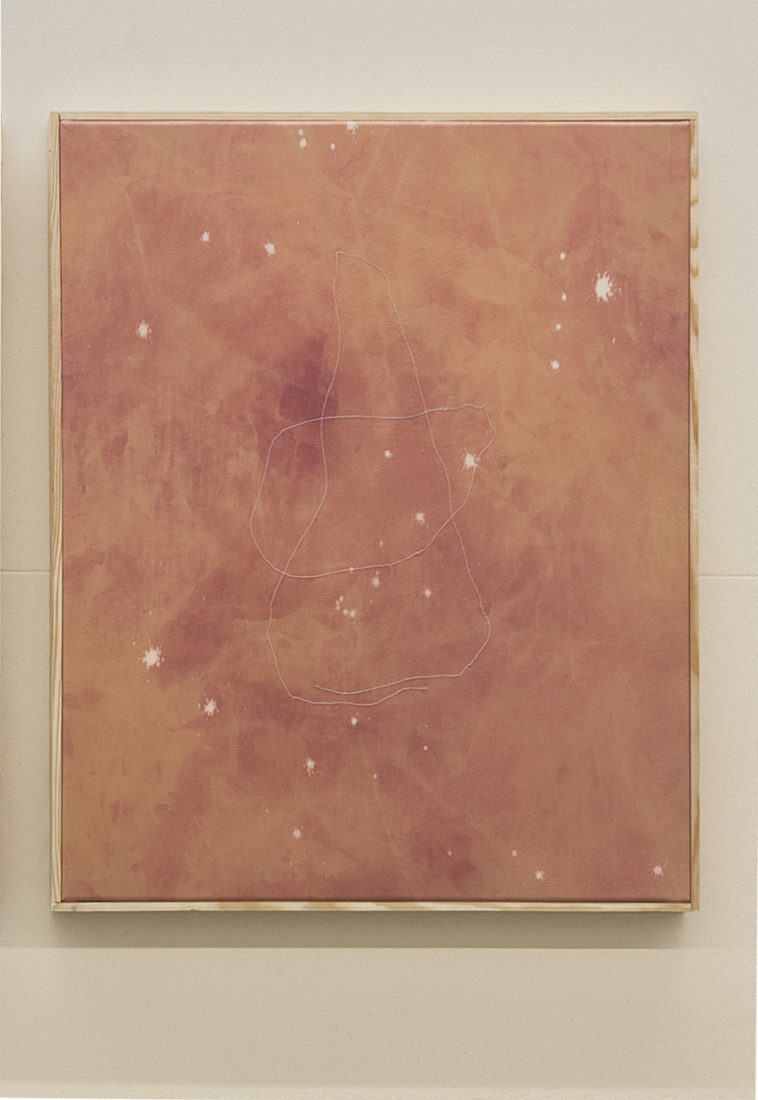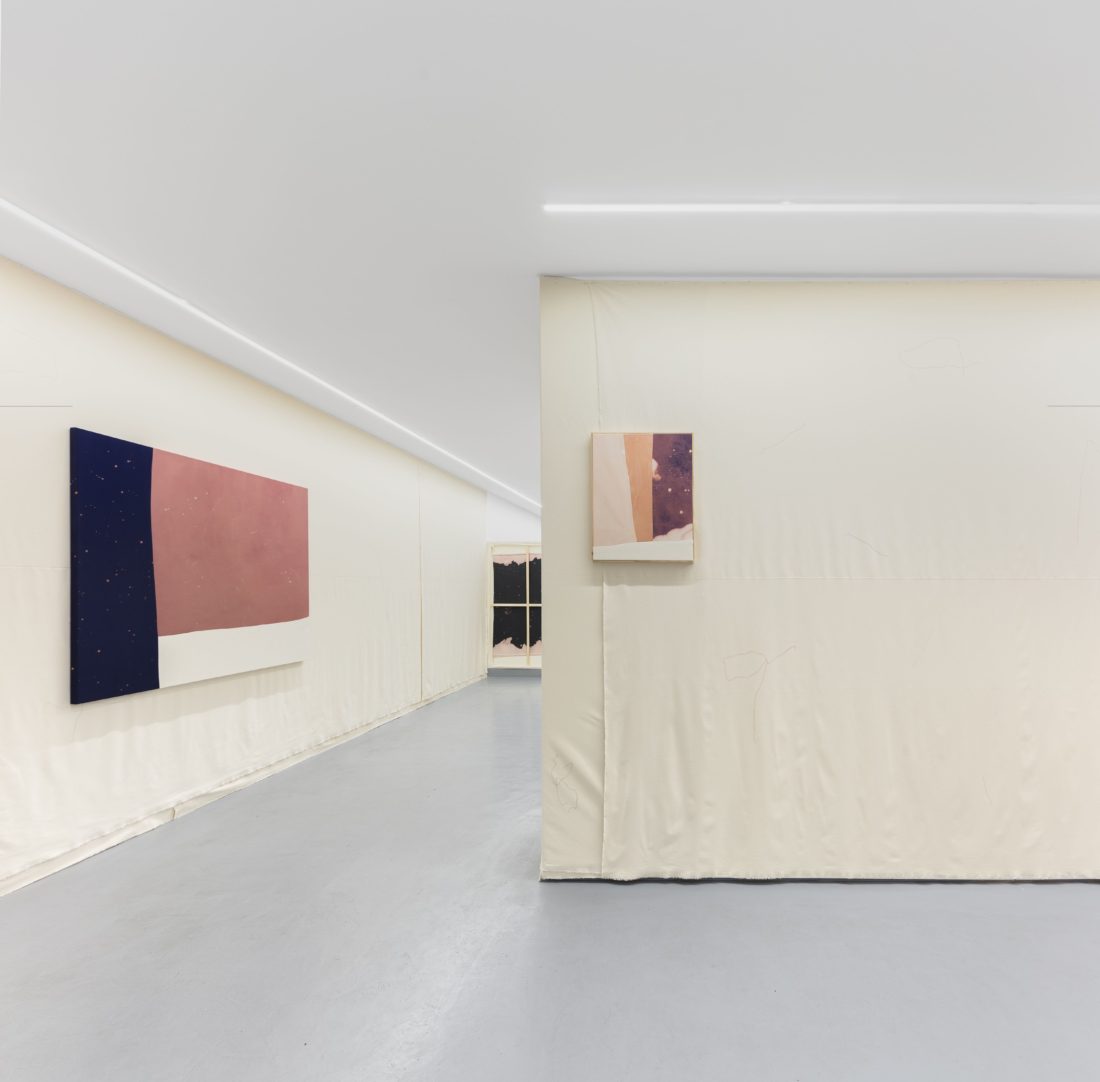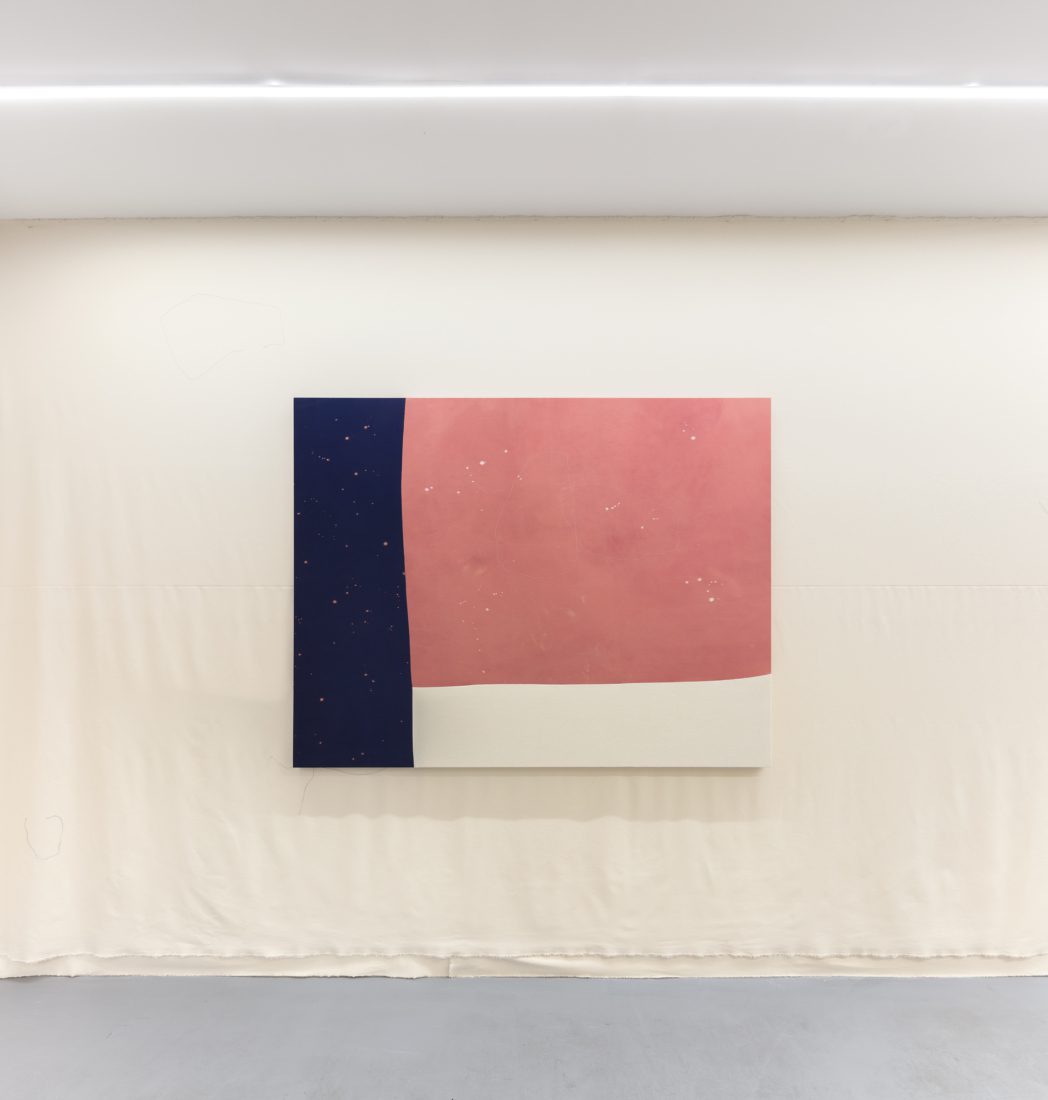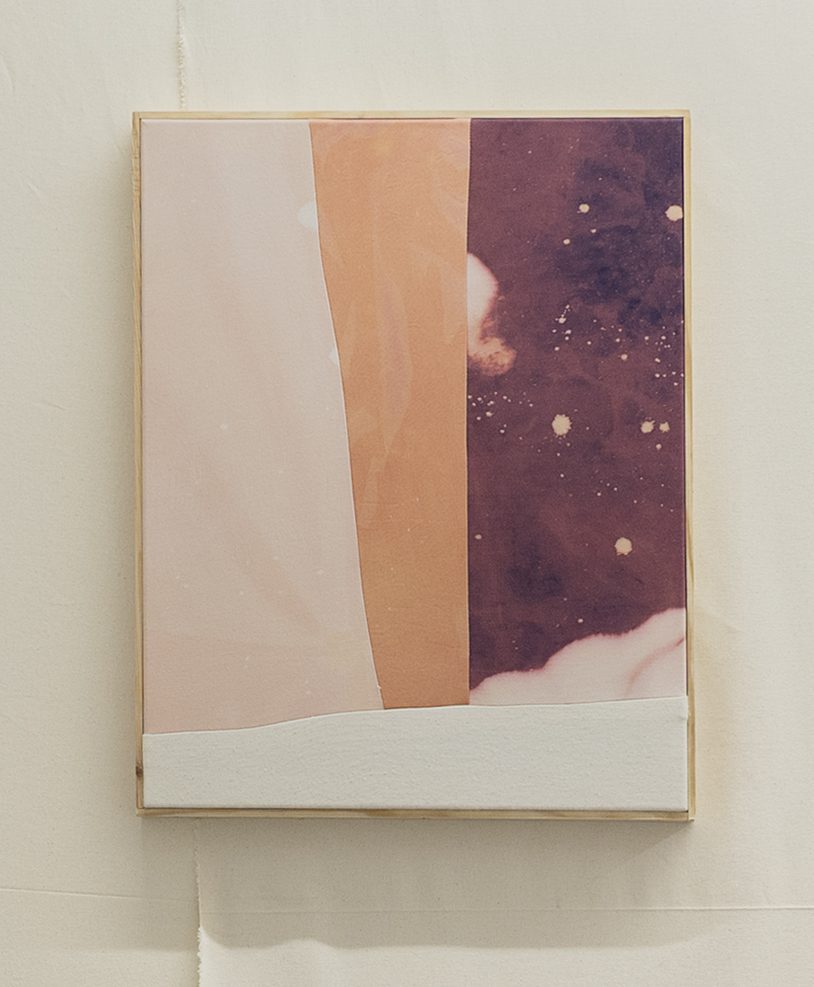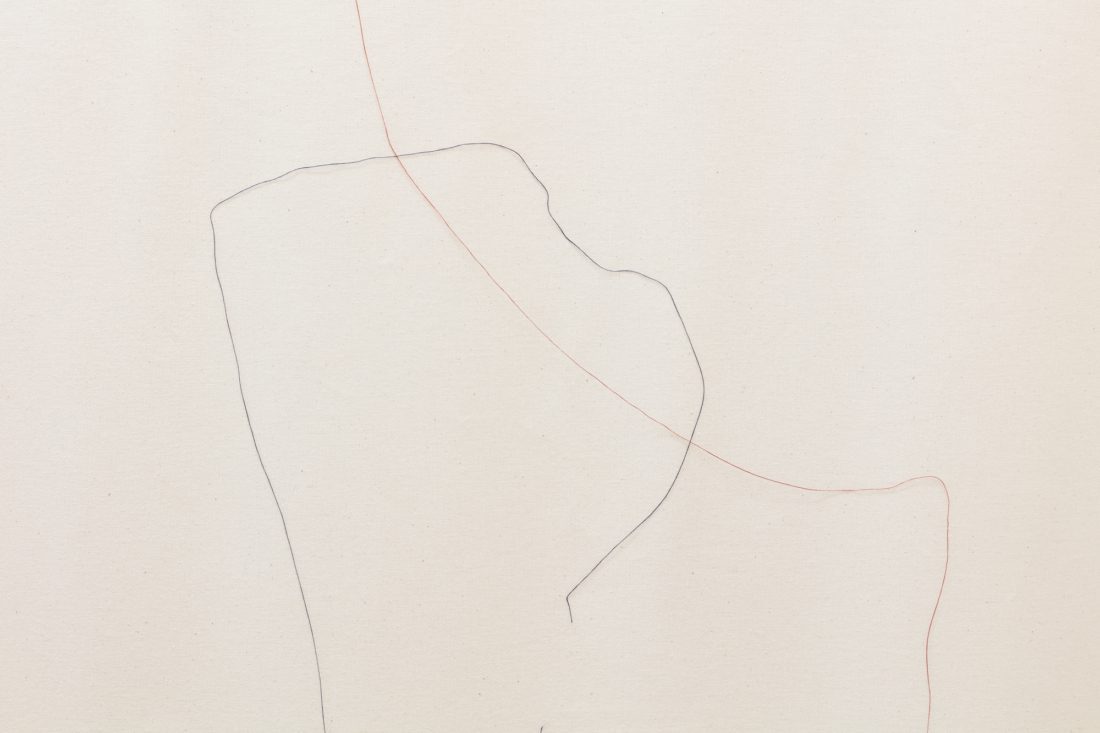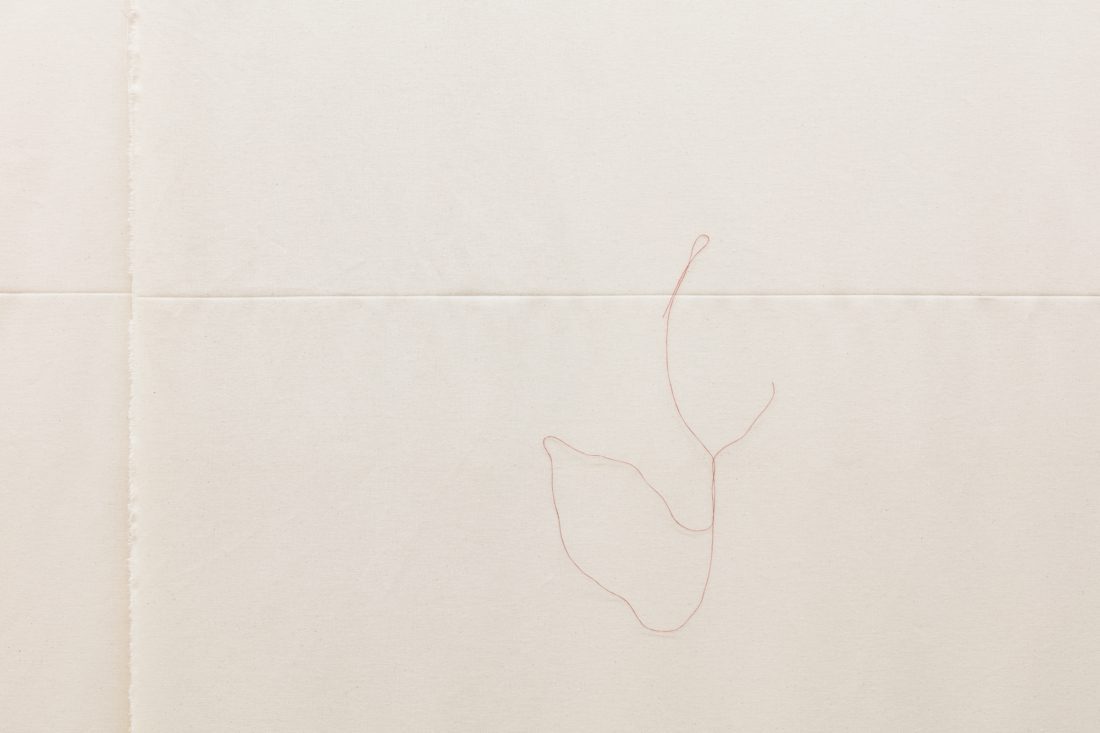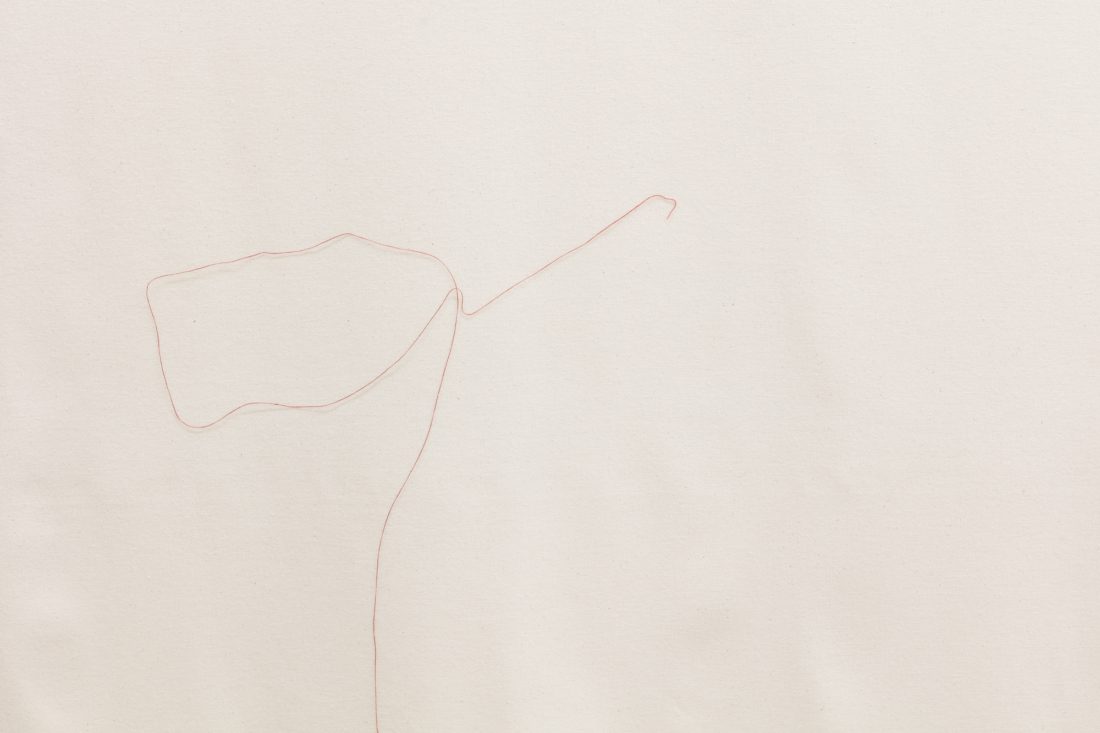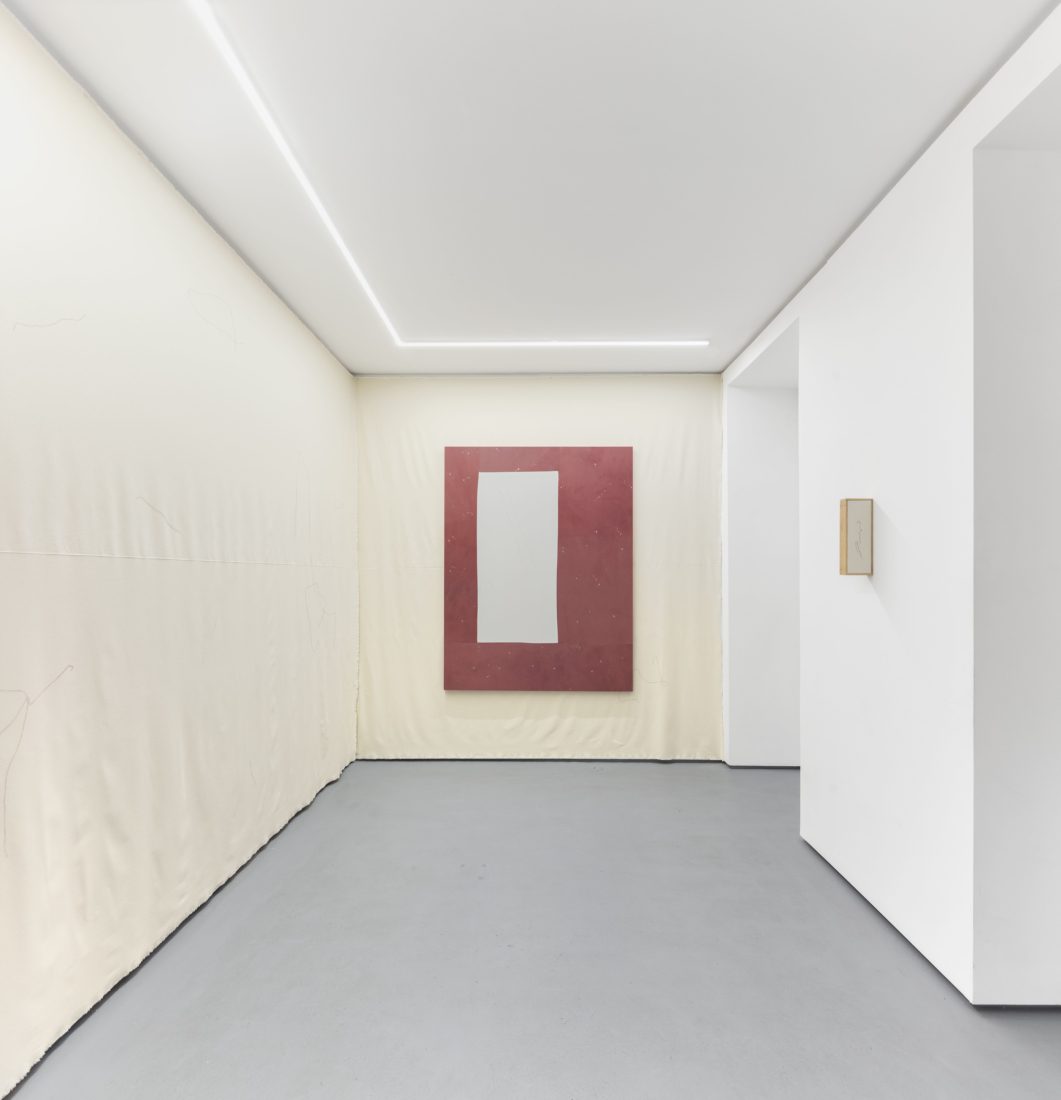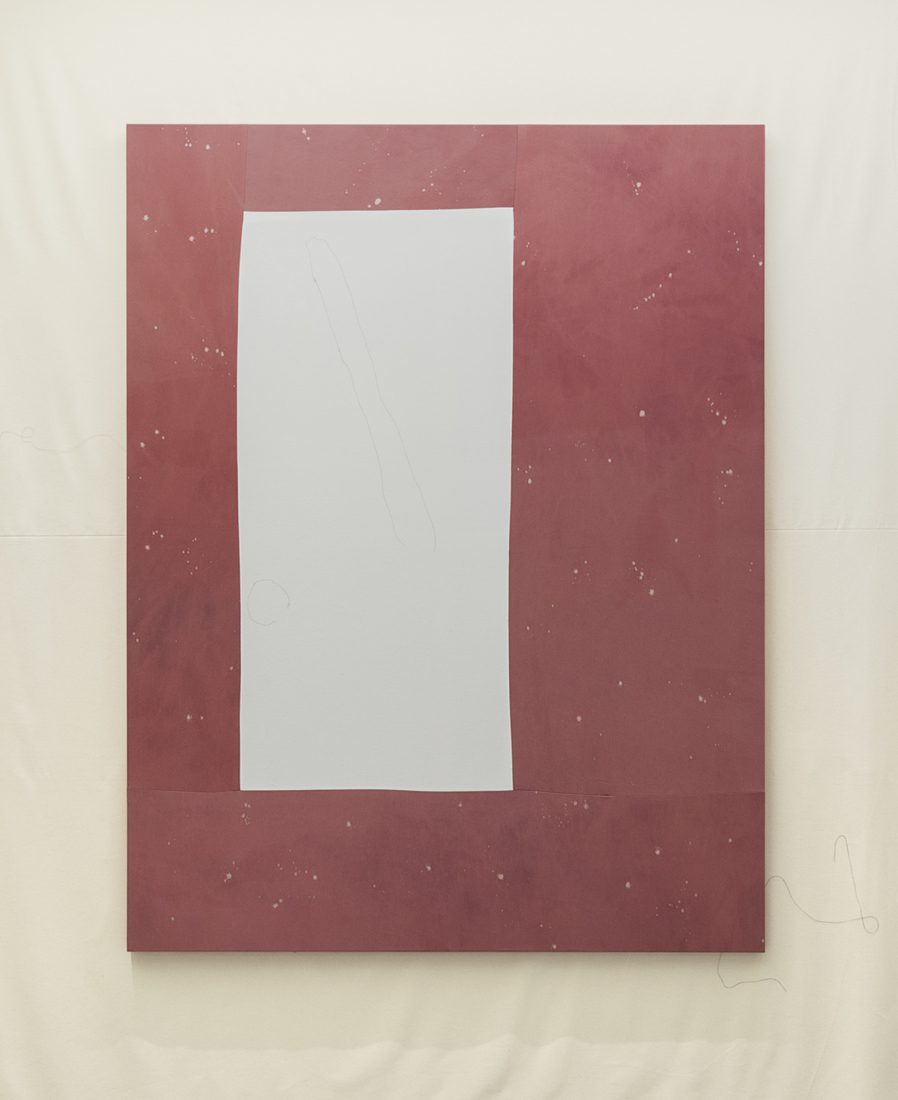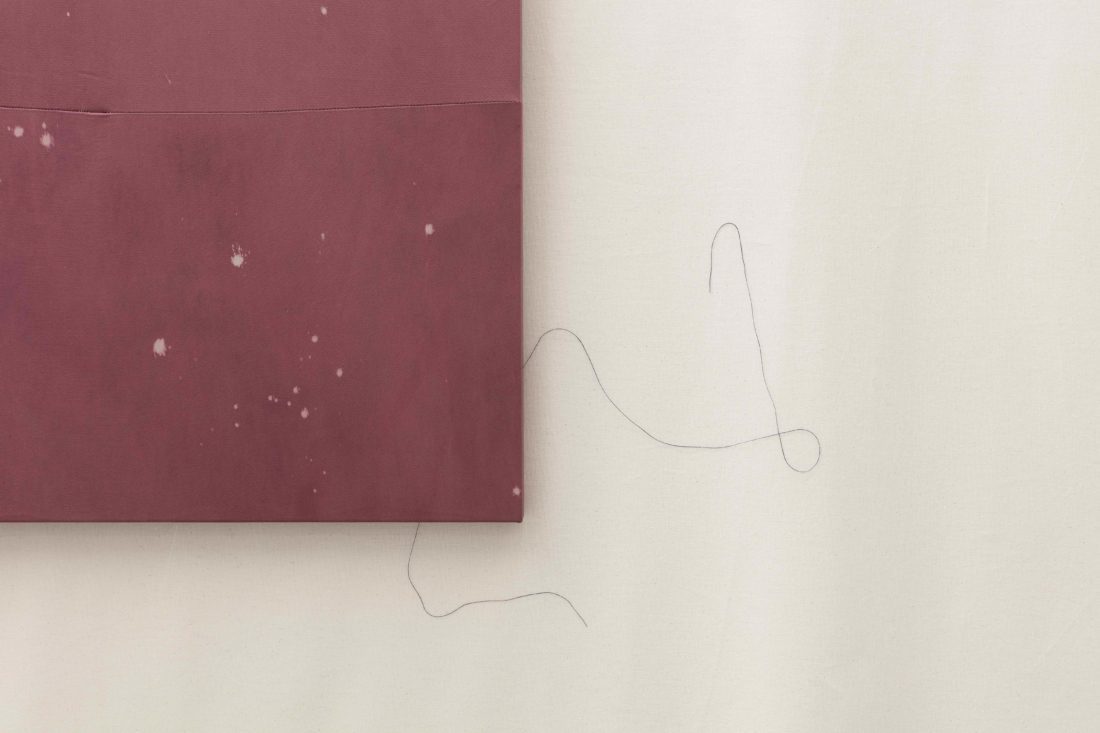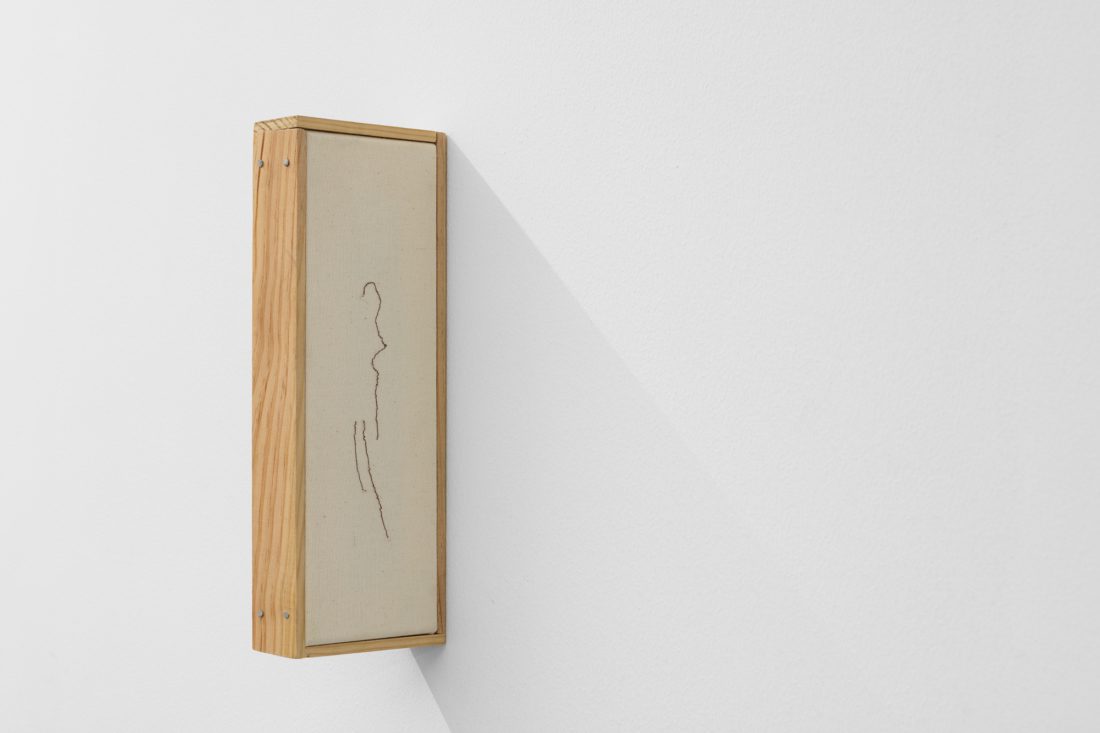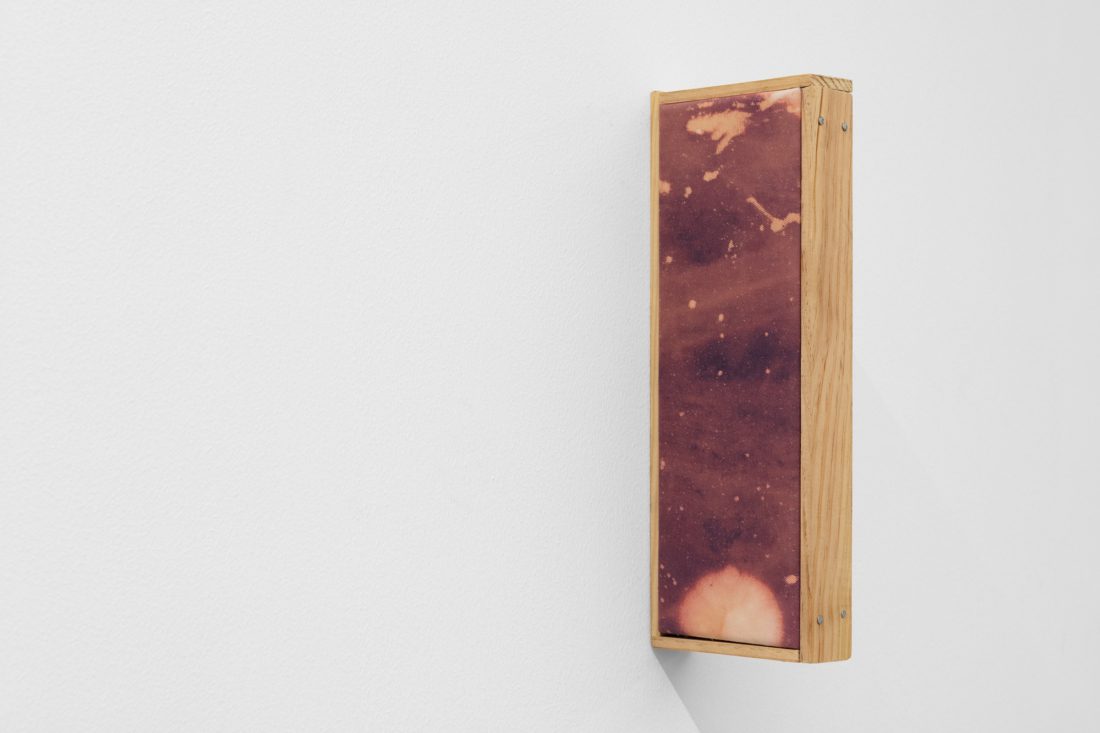Salmão Fingido
Manuel Tainha
[10/01/20 - 01/02/20]
Walk into the gallery space. As you pass the midway point, you transition from looking at paintings to being inside a painting. Pay attention to the textures, colors, and layers that surround you. How does it feel? The gallery space has been turned into an immersive spatial installation composed of canvas, paintings and string fragments, placing the viewer into a floating daydream. Here Manuel Tainha’s visual references reach to Hans and Sophie Arp’s drawings and images of sliced raw fish. Experiencing this work of art exceeds the limits of painting, creating raw feeling of merging layers of materials and images.
Tainha’s creative process is rather brutal. Through soaking various materials in bleach and exposing them to their surroundings, such as sunlight or beer bottles, his works gain peculiar compositions. Common textiles become a work of art, giving them a new meaning, and initiate a dialog on the shifting meaning of art objects with the changes wrought by time and market value. Living in the current atmosphere that mandates a consistent race for innovation and overproduction for the sake of economic gains, Tainha’s artistic production positions itself as a curious representation of labour.
Salmão Fingido reflects upon the signifying role of gallery space, the labour of creative process, the value of objects. In a broad sense, these are the elements which constitute Tainha’s work. Fake salmon – the popular dish of Portuguese middle-class – is used as a metaphor for aspirational expectations versus material realities. Tainha uses these cultural objects to provoke questions about deception, ingenuity, and access to commodities in today’s world. Salmão Fingido is made of leftover boiled white fish, tomato sauce, eggs and cream with mayonnaise, radish and lettuce add as garnishes.
Curated by Kasia Sobczak

